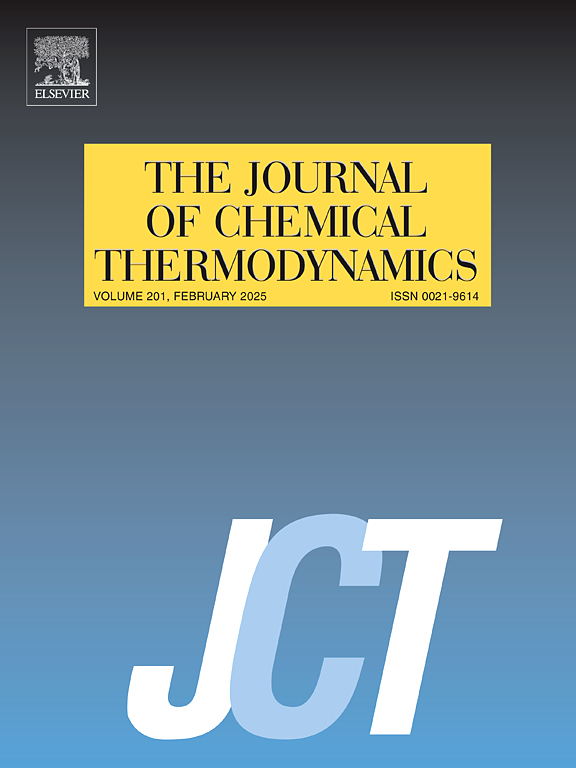Vaporization enthalpies of self-associated aromatic compounds at 298.15 K: A review of existing data and the features of heat capacity correction. Part III. Polyphenols, polyanilines and aminophenols
IF 2.2
3区 工程技术
Q3 CHEMISTRY, PHYSICAL
引用次数: 0
Abstract
The experimental data on the phase transition enthalpies and heat capacities of numerous polyphenols, polyanilines and aminophenols in the condensed and ideal gas state were analyzed to obtain the reliable values at 298.15 K. For this purpose, we combined experimental data on the crystal, liquid, and ideal gas heat capacities and fusion, sublimation and vaporization enthalpies. Significant part of these data, including the ideal gas heat capacities of 16 molecules, vapor pressures and vaporization enthalpies of 1,3-diaminobenzene and 1,6-dihydroxynaphthalene, were obtained in this work. A modified approach for the estimation of the temperature dependence of vaporization enthalpies of polyphenols, polyanilines and aminophenols showing performance competitive with the experimental one was proposed based on the analysis performed.
298.15 K 时自结合芳香族化合物的汽化焓:现有数据回顾与热容量修正的特点。第三部分.多酚、多苯胺和氨基酚
为此,我们综合了有关晶体、液体和理想气体热容量以及熔融、升华和汽化焓的实验数据。其中大部分数据,包括 16 个分子的理想气体热容、1,3-二氨基苯和 1,6-二羟基萘的蒸汽压和汽化焓,都是在这项工作中获得的。根据所做的分析,提出了一种估算多酚、多苯胺和氨基酚汽化焓随温度变化的修正方法,其性能与实验方法相当。
本文章由计算机程序翻译,如有差异,请以英文原文为准。
求助全文
约1分钟内获得全文
求助全文
来源期刊

Journal of Chemical Thermodynamics
工程技术-热力学
CiteScore
5.60
自引率
15.40%
发文量
199
审稿时长
79 days
期刊介绍:
The Journal of Chemical Thermodynamics exists primarily for dissemination of significant new knowledge in experimental equilibrium thermodynamics and transport properties of chemical systems. The defining attributes of The Journal are the quality and relevance of the papers published.
The Journal publishes work relating to gases, liquids, solids, polymers, mixtures, solutions and interfaces. Studies on systems with variability, such as biological or bio-based materials, gas hydrates, among others, will also be considered provided these are well characterized and reproducible where possible. Experimental methods should be described in sufficient detail to allow critical assessment of the accuracy claimed.
Authors are encouraged to provide physical or chemical interpretations of the results. Articles can contain modelling sections providing representations of data or molecular insights into the properties or transformations studied. Theoretical papers on chemical thermodynamics using molecular theory or modelling are also considered.
The Journal welcomes review articles in the field of chemical thermodynamics but prospective authors should first consult one of the Editors concerning the suitability of the proposed review.
Contributions of a routine nature or reporting on uncharacterised materials are not accepted.
 求助内容:
求助内容: 应助结果提醒方式:
应助结果提醒方式:


